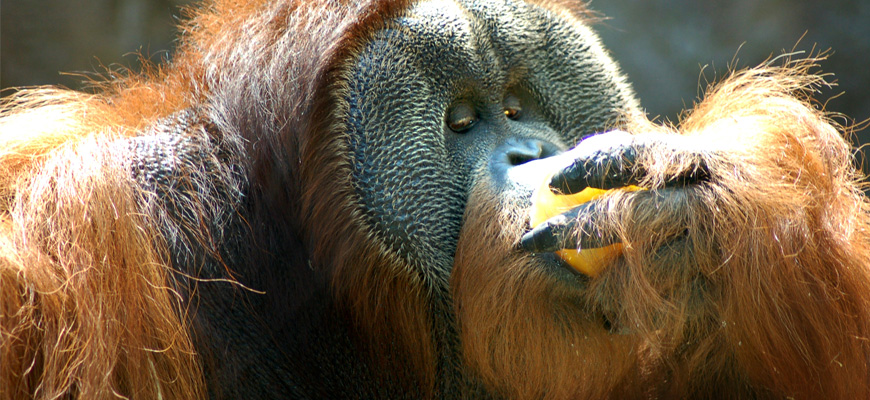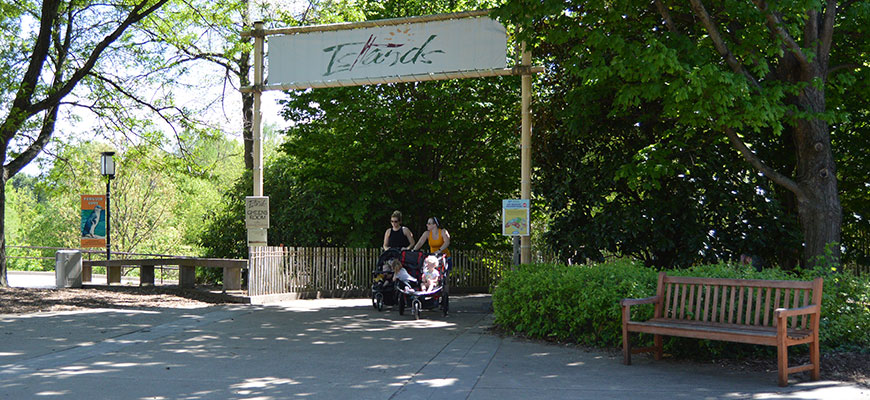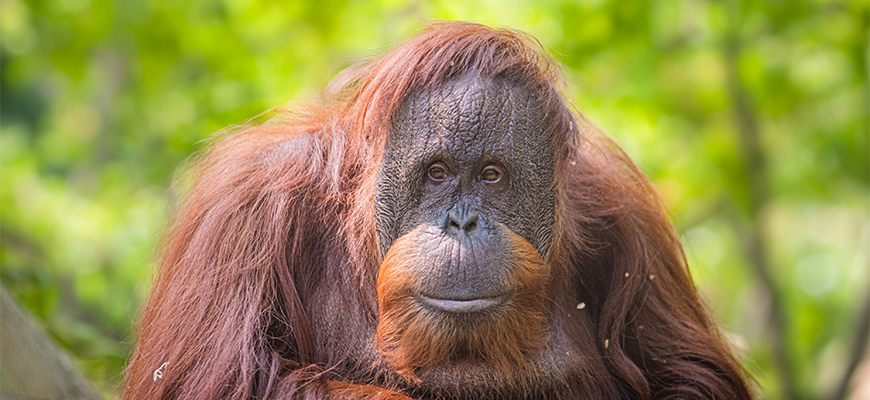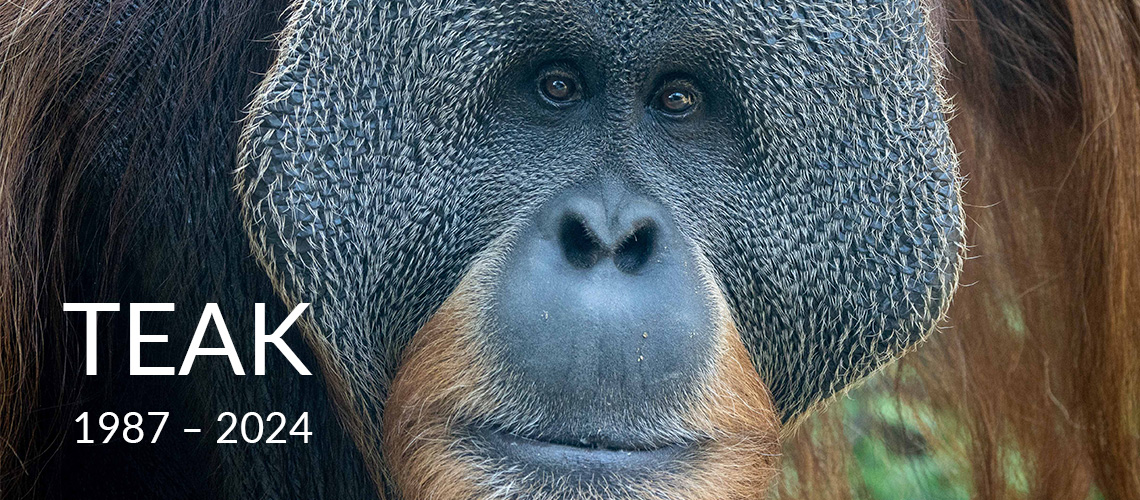On Tuesday, March 26, 2024, the Louisville Zoo made the heartbreaking decision to humanely euthanize beloved orangutan Teak, following a multi-year battle with heart disease. He was 36 years old.
“Teak was undeniably a Louisville Zoo celebrity,” said Dan Maloney, Louisville Zoo Director. “His remarkable personality made him a wonderful ambassador for his species, inspiring visitors of all ages to care about wildlife.”
In addition to heart disease, Teak was also being treated for a chronic respiratory illness known as Orangutan Respiratory Disease Syndrome (ORDS). His survival to this age is a testament to his resilience and the exceptional medical attention he received.
While our staff mourns the loss of any animal, we also recognize how profoundly Teak’s passing will impact our wider community. He was a very special member of our Zoo family. We’re grateful for everyone who has visited and enriched Teak’s time in Louisville. Teak will be greatly missed.
TEAK FAQS |
 |
| BORN: November 21, 1987 BIRTHPLACE: Como Park Zoo (St. Paul, MN) PASSING: March 26, 2024 OFFSPRING: None
|
ISLANDS EXHIBIT |
 |
| The Islands Zone is home to the world’s first multi-species rotational exhibit, which simulates the way multiple species live in the wild. Animals from these islands have adapted through eons of isolation and are uniquely vulnerable to change. The exhibit highlights how man and nature must maintain a delicate balance for both to survive. In addition to our three beloved orangutans, Amber, Segundo and Bella, Islands also features Sumatran tigers, siamangs, Malayan tapirs and babirusas. There are also two species of penguins (African and Little), assorted bird species, fruit bats, prehensile-tailed porcupines, as well as the highly endangered Cuban Crocodile. |
MEET OUR OTHER ORANGUTANS |
 |
| AMBER was born at the Como Park Zoo in St. Paul, Minnesota on October 15, 1987. She came to the Louisville Zoo in 1996. Amber is known for her playful personality. She enjoys interacting with guests and may tap the glass to grab the attention of those nearby, pointing out sparkling accessories, brightly colored fingernails, or gesturing towards a purse or backpack to see what’s inside. SEGUNDO was born on November 12, 1987. He was born at the Gladys Porter Zoo in Brownsville, Texas where he lived before arriving at the Louisville Zoo on May, 19 1997. Segundo has very distinctive coat with the hair on his arms nearly reaching the ground when he stands. BELLA was born at the San Diego Zoo on July 1, 1984 and she came to the Louisville Zoo from the Calgary Zoo in Canada on December 19, 1997. Bella is the larger of our female orangutans and has a slightly wider face. |
ORANGUTANS AND PALM OIL |
 |
| Palm oil is an edible vegetable oil and is used in many of the foods and products you likely buy; it is the most widely consumed vegetable oil in the world, created from the fruit of oil palm trees native to the rainforests of Africa as well as Central and South America. Unfortunately, not all farming of these trees is environmentally friendly — and the unsustainable palm oil industry is responsible for wide-scale deforestation to make way for oil palm plantations. These plantations are often created through “slash and burn” methods of deforestation which causes air pollution, water pollution, soil pollution and erosion, as well as contributing to climate change. According to the World Wildlife Fund, 90% of palm oil trees are grown in Malaysia and Indonesia. The exact scale of palm oil deforestation in these countries is unknown, but the impact is so large it is noticeable from space. These forests are also some of the most biodiverse on Earth, home to many critically endangered species such as rhinos, orangutans, tigers, and so many more incredible and precious species. The continued destruction of this habitat is pushing many species to the brink of extinction; if we do not act right now we could lose these incredible animals forever. |

